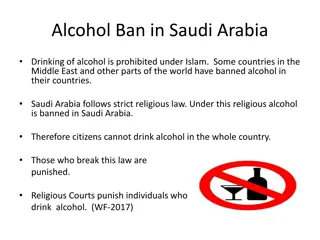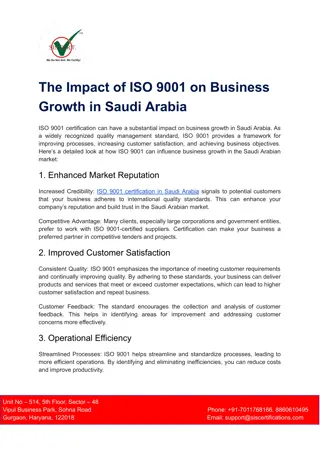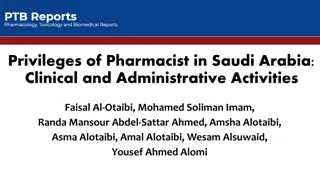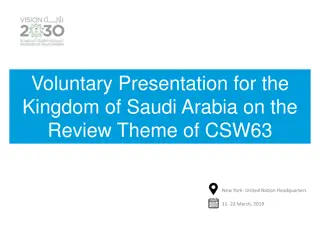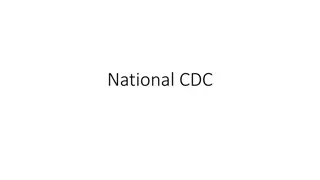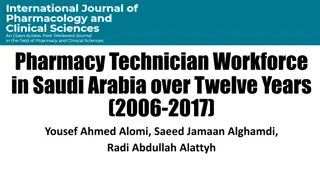
Activins and Follistatin Correlations in Chronic Hepatitis C Patients
Explore the correlations of activins and follistatin with viral load, liver damage, IL-6, and TNF in treatment-naïve chronic hepatitis C patients of genotypes 1 and 4. Understand the immune response and phases of HCV infection. Dive into the role of activins in various biological processes and their protein structure.
Download Presentation

Please find below an Image/Link to download the presentation.
The content on the website is provided AS IS for your information and personal use only. It may not be sold, licensed, or shared on other websites without obtaining consent from the author. If you encounter any issues during the download, it is possible that the publisher has removed the file from their server.
You are allowed to download the files provided on this website for personal or commercial use, subject to the condition that they are used lawfully. All files are the property of their respective owners.
The content on the website is provided AS IS for your information and personal use only. It may not be sold, licensed, or shared on other websites without obtaining consent from the author.
E N D
Presentation Transcript
The correlations of activins and follistatin with The correlations of activins and follistatin with viral load, viral load, liver damage, liver damage, IL IL- -6 6 and TNF treatment na ve patients with chronic hepatitis C treatment na ve patients with chronic hepatitis C genotype genotype 1 1 and and 4 4: : A case A case- -control study and TNF- - in in control study Ahmed Ahmed Mohammed Ashshi Mohammed Ashshi1 1, Bassem Refaat El El- -Shemi Shemi1and Adnan and Adnan AlZanbagi AlZanbagi2 Bassem Refaat1, Adel Adel Galal Galal
Chronic Hepatitis C ( Chronic Hepatitis C (CHC) WHO: 170 million infected World Wide 3-4 NEW infections/Year It has been classified in to 6 genotypes CHC) Genotypes1 and 4 in Saudi Arabia Major cause of liver damage Fibrosis/Cirrhosis Hepatocellular Carcinoma
Immune Response to HCV Infected hepatocyte IL-2 IFN- & TNF IFN- \ NKT NK IFN- TNF- Inhibit Viral Replication without destroying of hepatocytes
Acute Phase of HCV Infection Acute Phase of HCV Infection (Th2) IL-4 IL-6 IL-10 (Th1) INF- IFN- IL-12
Chronic Phase of HCV Infection Chronic Phase of HCV Infection (Th1) INF- IFN- IL-12 (Th2) IL-4 IL-10 IL-13 Th2 Response also includes the stimulation of Th2 Response also includes the stimulation of Transforming Growth Factor ( Transforming Growth Factor (TGF) TGF)- -
Activins Activins Members of TGF- superfamily Originally identified as gonadal proteins Recently involved in many systems: Growth & differentiation Inflammation (Pro or Anti depending on cellular context) Fibrotic diseases
Structure of Activins proteins Structure of Activins proteins A-subunit B-subunit A B A A B A B B Activin-A Activin-AB Activin-B
Follistatin Follistatin ( (Activin Activin binding protein) binding protein)
Activins & Activins & Follistatin Follistatin TGF TGF- - follistatin follistatin Regulation Activin Activin In Liver In Liver disease disease (Fibrosis, HCC) (Fibrosis, HCC) In immune In immune system (Th system (Th1 1 & Th Th2 2 responses) responses) In normal liver In normal liver (Hepatocyte (Hepatocyte regeneration) regeneration) &
Research Questions Research Questions What are the effects of CHC genotype What are the effects of CHC genotype 1 1& &4 4 on serum activin on serum activin- -A & B and follistatin A & B and follistatin Is there a difference between: Is there a difference between: Male and Female patients? Male and Female patients? Genotype Genotype 1 1 & & 4 4? ? Do activins & follistatin correlate with: Do activins & follistatin correlate with: Pro Pro- -inflammatory cytokines (TNF inflammatory cytokines (TNF- - and IL Liver enzymes? Liver enzymes? Liver fibrosis? Liver fibrosis? and IL- -6 6)? )?
Study Design ( Study Design (Case Case- -Control) Control) 80 80 Participants Participants Control Group Control Group 40 Healthy Participants Case Group Case Group 40 CHC treatment Na ve Patients 20 Males 20 Males 20 Males 20 Females 10 G1 10 G4
Inclusion Inclusion criteria criteria Control Group Control Group Case Case Group Group Patient age Patient age 18 18 45 45 years. years. Patient age Patient age 18 18 45 45 years. years. No concurrent No concurrent acute/ acute/chronic chronic disease disease HCV RNA positive HCV RNA positive Proven fertility Proven fertility No concurrent infection with HBV or HIV No concurrent infection with HBV or HIV Not taking exogenous hormones/ Not taking exogenous hormones/oral contraceptive pills for at oral contraceptive pills for at Proven fertility Proven fertility least least 3 3 months prior to enrolment months prior to enrolment No history of hospitalisation and no medication for significant No history of hospitalisation and no medication for significant Not taking exogenous hormones/ Not taking exogenous hormones/oral contraceptive pills oral contraceptive pills clinical disease clinical disease for at least for at least 3 3 months prior to months prior to enrolment enrolment laboratory results for their haematological, laboratory results for their haematological, biochemical and biochemical and Treatment na ve patients Treatment na ve patients metabolic parameters were within normal range metabolic parameters were within normal range Compensated liver disease ( Compensated liver disease (e. e.g. g. no liver cirrhosis, no liver cirrhosis, failure failure or cancer) & or cancer) & APRI APRI 1.2 1.2 Acceptable Acceptable haematological haematological and biochemical indices and biochemical indices No or controlled type No or controlled type 2 2 diabetes mellitus and diabetes mellitus and hypertension hypertension
Methods Methods Liver function parameters & Viral load AST/Platelet Ratio Index (APRI) to assess liver fibrosis ELISA to measure serum: Activin-A Activin-B Follistatin IL-6 TNF-
1 1- - Demographic and laboratory characteristics of the patients according Demographic and laboratory characteristics of the patients according to viral genotype and gender of the participants ( to viral genotype and gender of the participants (ND = 0.05 0.05 compared to CM and b = compared to CM and b = p < p < 0.05 0.05 compared to CF groups). ND = not done; not done; a = compared to CF groups). a = p < p < Control Male Control Male Control Female Control Female Male G Male G 4 4 Female G Female G1 1 Female G Female G4 4 Male G Male G1 1 ( (MG MG1 1) ) ( (CM) CM) ( (CF) CF) ( (MG MG4 4) ) ( (FG FG1 1) ) ( (FG FG4 4) ) ( (n= n= 10 10) ) ( (n = n = 20 20) ) ( (n = n = 20 20) ) ( (n= n= 10 10) ) ( (n= n= 10 10) ) ( (n= n= 10 10) ) Age ( Age (years) years) 39 5.4 36 8.3 40.3 4 39.2 5.7 37.9 6.2 34.8 8.8 Viral load at Viral load at 866784.8 945148.7 1007458.5 988447.8 diagnosis diagnosis ND ND 237056.2 381181.2 318742.4 372327.8 ( (IU/ IU/mL) mL) 133.3 ALP ( ALP (IU/ IU/L) L) 79.4 21.6 69.2 16.1 125 45.8a,b 130.6 63a,b 124 32.3a,b 35.4a,b ALT ( ALT (IU/ IU/L) L) 28 11.2 22.2 5.6 89.3 18.1a,b 81.6 19a,b 71.9 22.7a,b 72.8 20.1a,b AST ( AST (IU/ IU/L) L) 21 4.6 22.1 3.1 50.5 14.3a,b 54.6 12.5a,b 57.8 13.4a,b 51.9 15.5a,b Albumin Albumin 4.4 0.24 4.5 0.27 3.7 0.5a,b 3.6 04a,b 3.6 0.4a,b 3.7 0.5a,b ( (g/ g/dL) dL) APRI APRI 0.37 0.07 0.36 0.06 0.78 0.3a,b 0.84 0.25a,b 0.85 0.29a,b 0.89 0.32a,b
2 2- - Mean Mean standard deviation of standard deviation of IL IL- -6 6 and TNF 0.05 0.05 compared to CM, compared to CM, b = p < p < 0.05 0.05 compared to MG compared to MG4 4 and e = and TNF- - in 0.05 compared to CF; compared to CF; c = and e = p < p < 0.05 0.05 compared to FG in the different study groups ( the different study groups (a = c = p < p < 0.05 0.05 compared to MG compared to FG4 4 groups). groups). a = p < p < b = p < p < 0.05 compared to MG1 1; ; d = d = Control Control Control Control Male G Male G1 1 Male G Male G 4 4 Female G Female G1 1 Female G Female G4 4 Female Female Male ( Male (CM) CM) ( (MG MG1 1) ) ( (MG MG4 4) ) ( (FG FG1 1) ) ( (FG FG4 4) ) ( (CF) CF) ( (n = n = 20 20) ) ( (n= n= 10 10) ) ( (n= n= 10 10) ) ( (n= n= 10 10) ) ( (n= n= 10 10) ) ( (n = n = 20 20) ) TNF TNF- - 12..1 2.4a,b 12.5 1.8a,b 11.9 1.6a,b 12.3. 2.1a,b 6.1 1.5 5.8 2.1 (pg/mL) (pg/mL) IL IL- -6 6 10.6 1.6a,b 11 1.9a,b 9.9 1.4a,b 10.8.2 1.7a 4.1 1.1 3..6 1.01 ( (pg/ pg/mL) mL)
3 3- - Serum Activin Serum Activin- -A according to viral genotype ( A according to viral genotype (a a = = p < p < 0.05 0.05 compared to control) compared to control)
4 4- - Serum Serum Activin = = p < p < 0.05 0.05 compared to control) compared to control) Activin- -B B according to viral genotype according to viral genotype ( (a a
5 5- - Serum Serum follistatin ( (a a = = p < p < 0.05 0.05 compared to control) compared to control) follistatin according to viral genotype according to viral genotype
6 6- - Correlation of serum activins and follistatin with pro Correlation of serum activins and follistatin with pro- - inflammatory cytokines, inflammatory cytokines, liver function parameters and viral load liver function parameters and viral load Activin Activin- -A A was strongly and positively correlated was strongly and positively correlated with: viral load APRI IL-6 and TNF- negatively with albumin with: Activin-B showed similar correlations similar correlations to activin-A but only in CHC genotype only in CHC genotype 1 1 and it was weaker No correlation was detected for follistatin
R = 0.836 P = 0.01 X 10-9
R = 0.593 P = 0.0005
R = 0.745 P = 0.03 X 10-6
R = 0.734 P = 0.006 X 10-4
R = -0.586 P = 0.0007
Conclusions Conclusions CHC genotype 1 and 4 significantly altered serum activins and follistatin The observed significant correlations with viral load, IL-6 & TNF- suggests that activins are involved in the host immune response to HC The correlation of activins with liver enzymes and APRI suggest that the dysregulation of activins is associated with liver injury
Future Work Future Work Could serum activins and follistatin be used as non-invasive markers for the diagnosis/staging of liver fibrosis? Could serum activins and follistatin be used as prognostic markers for the prediction of CHC treatment outcome?








